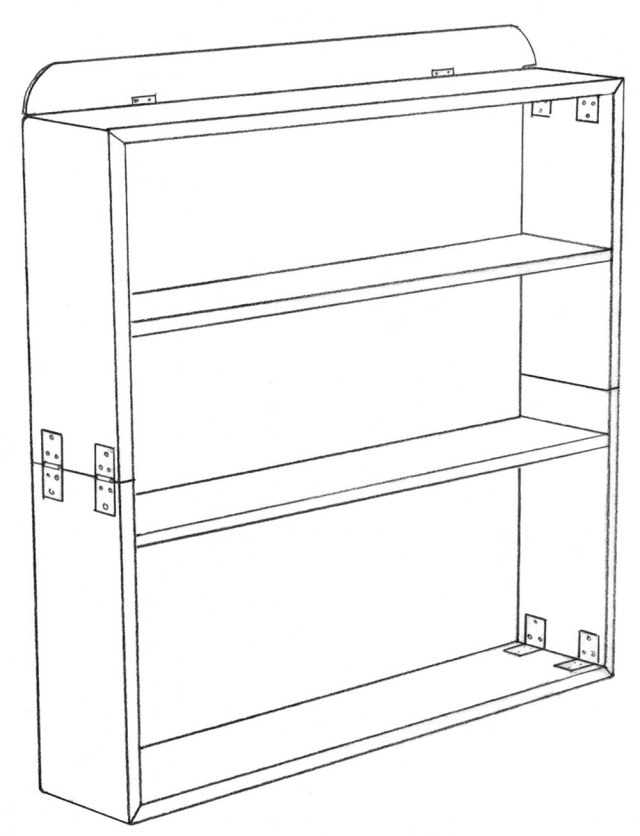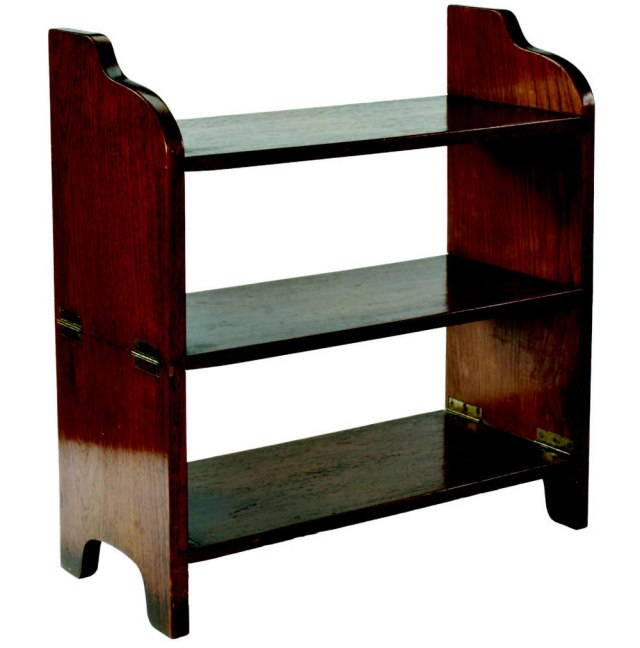
This is an excerpt from “Campaign Furniture” by Christopher Schwarz.
Bookshelves that fold at or disassemble are common items among surviving pieces of campaign furniture. These ingenious units were generally pretty small. After all, it’s not as if you were traveling overseas with a Carnegie library, and books of the 19th century were usually compact items.
How small? A typical campaign shelf unit is 3′ wide, 2′ high and 8″ to 10″ deep. That’s not a lot of shelf space.
Many of these shelving units were designed to sit on top of another piece of furniture, such as a campaign chest or desktop. Or they were intended to hang on the wall, which was especially handy during a sea voyage.

Common Types of Portable Shelves
The most common type of portable shelf isn’t one you’d expect to see in a book on woodworking because it’s mostly metal. These shelves are tubular metal uprights that screw together with two, or usually three, wooden shelves between.
These shelves look spindly but are robust enough for the job.
A less-common variant on these shelves replaces the metal with wooden uprights – usually turned spindles – that screw together with the wooden shelves to produce the finished piece.
Another type of shelving unit is a folding book rack. The simplest form of book rack has a at shelf with two “bookends” that fold flat while traveling. These simple racks are not exclusive to the campaign style; you’ll find variants during every furniture period where books were common.
The ends of the three boards are mitered and hinged. Sometimes the ends have handles so you can lift and move the loaded rack.
There are more complex mechanical book racks that also expand in length as well as having folding ends. These usually require some tricky hardware to make them function well, so I decided not to build one for this book.

The third common type of collapsible shelving unit folds like an accordion. You usually remove a center shelf (or two), and the uprights fold in on themselves, turning your shelf unit into a flat pile of lumber. The first time you see it in action, it’s actually a little bewildering. But it is quite cool.
This type of shelf unit requires no special hardware – just a small pile of butt hinges. And there is almost no real joinery to speak of. So it’s an ideal project for the woodworker without access to a forge or a metal shop.
These accordion-style shelves came in several dierent sizes and configurations that were embellished or plain. Some versions were designed to hang on a wall; others sat on top of a chest or desk.

The shelves I built for this book are based on a unit I admired in one of the Christopher Clarke Antiques catalogs. The original was made from teak; mine is mahogany. While the only joinery in the whole project is cutting two dados, you will become quite an expert at installing butt hinges. It takes 12 hinges to get the whole thing to work. And installing the hinges precisely makes the shelf unit sturdier and makes it collapse more smoothly.
— MB